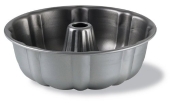




Cultivate abundance for people, plants and wildlife - Growing with Nature



 2
2




Idle dreamer
 1
1




Forest Gardening in Practice: The first comprehensive review of temperate forest gardens. Case studies of private, community and commercial sites. Order from https://reallifeforestgardens.com/book




A human being should be able to change a diaper, plan an invasion, butcher a hog, conn a ship, design a building, write a sonnet, balance accounts, build a wall, set a bone, comfort the dying, take orders, give orders, cooperate, act alone, solve equations, analyze a new problem, pitch manure, program a computer, cook a tasty meal, fight efficiently, die gallantly. Specialization is for insects.
-Robert A. Heinlein




Cultivate abundance for people, plants and wildlife - Growing with Nature



 1
1




Idle dreamer

 1
1




While sheet mulching an acre is a hefty project, consider mini sheet mulching:In smaller sections of my property I have just been mulching the grass with cardboard and woodchips and then planting trees, shrubs and other plants. This has worked great but it is impractical for the larger forest garden.
"Never doubt that a small group of thoughtful, committed citizens can change the world; indeed, it's the only thing that ever has."-Margaret Mead "The only thing worse than being blind, is having sight but no vision."-Helen Keller




Porch sitting is my favorite thing





|
It's just a flesh wound! Or a tiny ad:
The new permaculture playing cards kickstarter is now live!
https://www.kickstarter.com/projects/paulwheaton/garden-cards
|







